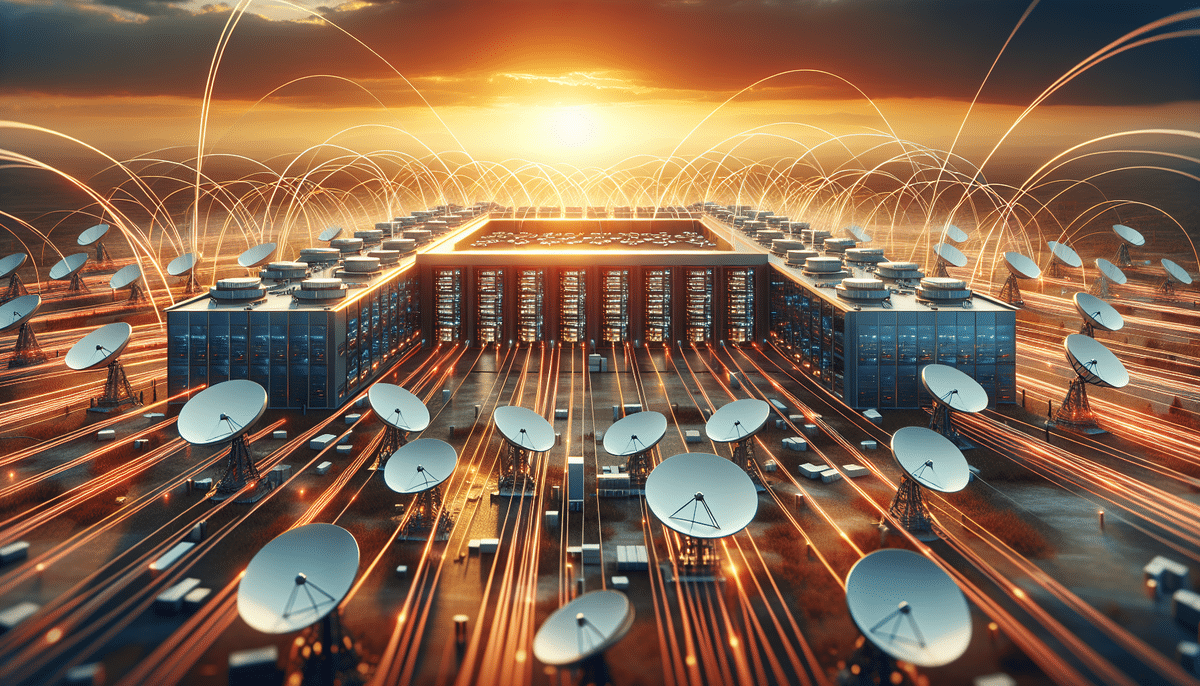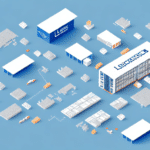What Is a Carrier Facility? Understanding the Basics
Have you ever heard of a carrier facility? If not, you're not alone—these facilities are often behind-the-scenes players in the complex world of telecommunications and data management. However, understanding what carrier facilities are and how they function is essential for anyone working in these industries. In this article, we'll delve into the basics of carrier facilities, exploring their history, functions, and importance in modern communications and data centers.
Different Types of Carrier Facilities and Their Functions
Carrier facilities come in a variety of forms, each with its own specialized functions. Some common types of carrier facilities include:
- Carrier Hotels: Large, multi-tenant buildings that house network and internet service providers.
- Data Centers: Facilities providing hosting and storage solutions for vast amounts of data and digital content.
- Points of Presence (PoPs): Network locations where carriers connect with one another to exchange data and traffic.
- Co-location Centers: Provide space and infrastructure for businesses to house their own servers and networking equipment.
- Mobile Switching Centers (MSCs): Specifically designed for mobile networks, managing the routing and switching of voice and data traffic.
Each type of carrier facility serves a unique purpose within the larger framework of telecommunications and data management networks. For example, carrier hotels often function as hubs for internet exchange points (IXPs), where ISPs can connect and exchange traffic. Data centers focus on providing secure, reliable hosting solutions for businesses and organizations that generate large amounts of data.
Co-location centers allow companies to have greater control over their data and network management while benefiting from the connectivity and security provided by the facility. MSCs ensure that calls and data transmissions are properly directed and delivered within mobile networks, maintaining seamless communication for users.
The History of Carrier Facilities: How They Came to Be
The origins of carrier facilities can be traced back to the earliest days of telecommunication networks, when carriers interconnected their infrastructure at physical locations to exchange traffic. As telecommunications technologies evolved and the demand for high-bandwidth data exchange grew, carrier facilities emerged as dedicated sites for these interconnections.
Today, carrier facilities play an essential role in the operation of the internet and modern communications networks. They enable the seamless exchange of data and traffic between carriers, ISPs, and content providers, facilitating fast and reliable access to online services and digital content. According to [Gartner](https://www.gartner.com/en), the global carrier facility market has seen significant growth, driven by increasing demand for cloud services and data management solutions.
Carrier facilities have also become increasingly important in the age of cloud computing. As more businesses move their data and applications to the cloud, carrier facilities provide a central location for cloud providers to connect with their customers and other service providers. This allows for faster and more efficient data transfer, as well as improved reliability and security.
Additionally, carrier facilities are designed with redundancy and backup systems, ensuring uninterrupted data and communication flow even during power outages or other disruptions. This level of reliability and resilience is crucial for businesses and organizations that rely on constant connectivity and data exchange.
The Role of Carrier Facilities in Telecommunications
Carrier facilities are pivotal in the telecommunications industry, enabling carriers to connect their networks and exchange traffic securely and reliably. Without carrier facilities, interconnecting networks and providing effective telecommunications services to customers would be significantly more challenging.
Carrier facilities take various forms, including data centers, co-location facilities, and network access points, providing the physical infrastructure necessary for carriers to house their equipment and connect to other networks. Additionally, these facilities often offer value-added services such as managed hosting, cloud computing, and security services, helping carriers differentiate themselves in a competitive market.
For instance, Equinix offers a range of interconnected data centers that facilitate seamless network connectivity and data exchange for carriers and other enterprises globally.
The Importance of Carrier Facilities in Data Centers
Data centers heavily rely on carrier facilities to provide robust connectivity to their customers, enabling the rapid and secure transfer of large data volumes. Carrier facilities offer redundancy and failover options for data center networks, ensuring that critical data remains accessible even during network outages or disruptions.
By utilizing carrier facilities, data centers can achieve significant cost savings by avoiding the expenses associated with building and maintaining their own network infrastructure. This is particularly beneficial for smaller data centers or those with limited resources.
Moreover, carrier facilities provide access to a diverse range of network providers and services, allowing data centers to choose options that best meet their specific needs, such as higher bandwidth or lower latency. They also offer access to cloud providers and other third-party services, expanding the capabilities and flexibility of the data center.
According to a [2023 report by IDC](https://www.idc.com/), the integration of carrier facilities in data centers has been a key driver in enhancing data center performance and scalability.
How Carrier Facilities Facilitate Internet Connectivity
Carrier facilities are fundamental in facilitating internet connectivity, enabling ISPs to exchange traffic and data efficiently and reliably. Without these facilities, ISPs would struggle to connect their networks, leading to slower and less dependable internet services for end-users.
Typically large data centers, carrier facilities house the necessary network equipment and servers in strategic locations where multiple ISPs can easily interconnect. They also provide essential services such as power backup, cooling systems, and physical security to ensure continuous operation of network equipment and servers. This reliability and redundancy are crucial for maintaining a stable and fast internet connection for users.
For example, the [AMS-IX](https://www.ams-ix.net/) in Amsterdam is one of the largest internet exchange points, providing critical infrastructure for numerous ISPs to interconnect and exchange traffic efficiently.
The Role of Carrier Hotels in Global Communications
Carrier hotels are integral to global communications, housing a variety of network and internet service providers within large, multi-tenant buildings. This setup enables providers to connect and exchange traffic, creating a more interconnected global network that facilitates fast and reliable communications and data exchange across countries and regions.
In addition to enhancing global connectivity, carrier hotels play a crucial role in disaster recovery and business continuity planning. By housing multiple service providers in a single location, carrier hotels offer redundancy and backup options in the event of network outages or natural disasters. This ensures that businesses and organizations can continue to operate and communicate effectively, even during unexpected disruptions.
According to [TeleGeography](https://www.telegeography.com/), carrier hotels are vital for maintaining robust and resilient global communication networks.
The Security Measures Implemented in Carrier Facilities
Given the sensitive nature of the data and traffic they handle, carrier facilities implement stringent security measures. These measures include:
- Physical Security: Surveillance cameras, access control systems, and biometric authentication systems to prevent unauthorized access.
- Network Security: Firewalls, intrusion detection and prevention systems, and encryption to protect data from cyber threats.
- Employee Protocols: Strict policies for employee access and data handling, including background checks and non-disclosure agreements.
Moreover, carrier facilities conduct regular security audits and assessments, such as penetration testing and vulnerability scanning, to identify and address potential security risks promptly. This continuous monitoring and improvement of security measures help protect the data and traffic handled by carrier facilities from evolving threats.
For more detailed information on security standards, refer to the [Uptime Institute's Security and Resilience Standard](https://uptimeinstitute.com/standards/security-resilience).
The Benefits and Limitations of Using a Carrier Facility
Carrier facilities offer numerous benefits, including:
- Fast, Reliable Connectivity: Ensures high-speed data transfer and minimal downtime.
- Robust Security Measures: Protects sensitive data and maintains network integrity.
- Scalability: Enables businesses to scale their operations up or down based on demand.
- Cost Savings: Reduces the need for businesses to invest in their own network infrastructure.
- Access to Diverse Network Providers: Offers flexibility in choosing network services that best meet business needs.
However, there are also limitations to using carrier facilities:
- Cost: Carrier facilities can be expensive to use, especially for small businesses.
- Specialized Expertise Required: Managing and maintaining connections often requires specialized knowledge.
- Potential for Network Congestion: High traffic volumes can lead to congestion and affect performance.
- Dependency: Relying on third-party facilities may introduce risks related to service availability and control.
When considering whether to use a carrier facility, businesses should evaluate their specific needs and priorities. For instance, companies experiencing seasonal demand fluctuations or rapid growth may benefit significantly from the scalability and flexibility offered by carrier facilities. On the other hand, businesses requiring extremely low latency or high levels of infrastructure control might prefer maintaining their own data centers.
Ultimately, the decision should be based on a comprehensive assessment of the benefits and limitations in relation to the business's operational requirements.
Top 5 Carrier Facility Providers in the World
Several carrier facility providers operate globally, each offering unique strengths and specialties. Here are five of the top carriers:
- Equinix: One of the largest carrier facility providers globally, with over 200 data centers in more than 50 markets across five continents. Equinix offers a range of services, including colocation, interconnection, and cloud services, and is renowned for its reliability and security. Learn more.
- Digital Realty: Another leading provider with over 280 data centers in 48 markets worldwide. Digital Realty specializes in customized solutions for various industries, including finance, healthcare, and technology, with a strong focus on sustainability and energy efficiency. Learn more.
- Global Switch: Operating data centers in key metropolitan areas, Global Switch offers high-density, scalable solutions tailored to enterprise needs. Learn more.
- CyrusOne: Known for its flexible and scalable data center solutions, CyrusOne provides robust infrastructure and connectivity options for large enterprises and growing businesses alike. Learn more.
- CoreSite: Focused on providing secure and reliable data center solutions, CoreSite offers comprehensive connectivity and cloud services across major U.S. markets. Learn more.
Evaluating the services and strengths of these providers can help businesses and organizations choose the best carrier facility provider to meet their specific needs.
Conclusion
Carrier facilities are an essential component of modern telecommunications and data management networks, providing critical connectivity, security, and reliability for carriers, data centers, and ISPs worldwide. By understanding the basics of carrier facilities and the functions they perform, individuals and businesses can make informed decisions on leveraging these facilities to support their telecommunications and data management needs.
Additional Resources
For more information on carrier facilities and related technologies, consider exploring the following resources:




















